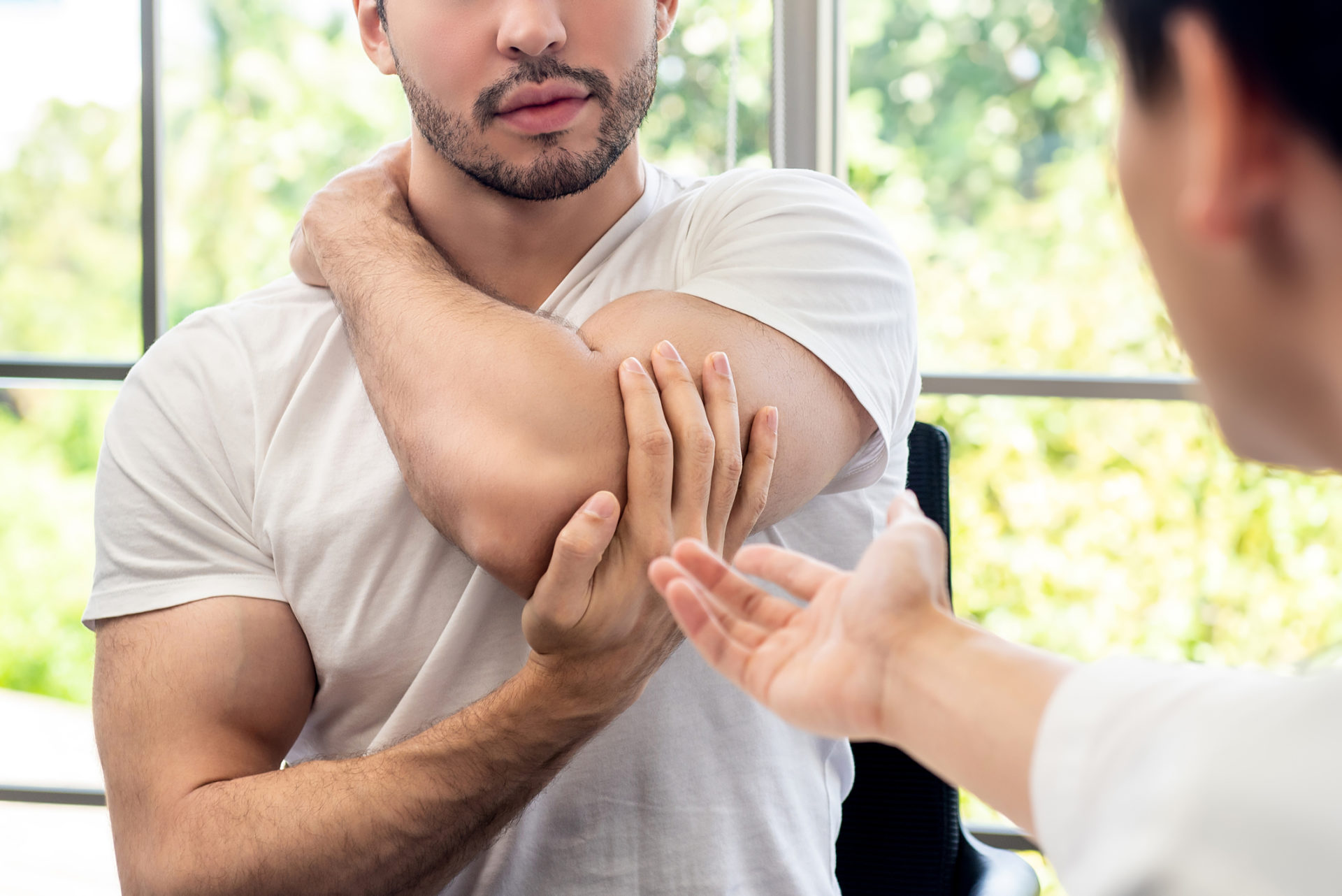What is Tennis Elbow?

Tennis elbow (also known as lateral epicondylitis) is characterized by pain and tenderness surrounding the outer part of the elbow joint.1
Tennis elbow is typically caused by repeated overuse of the wrist and arm muscles. This prolonged exertion can cause a series of micro-tears in the supporting tendons, resulting in swelling in your elbow.
While the term suggests that injury is common in tennis players and other athletes, it is also very prevalent in individuals who regularly perform repetitive motions that rely on the elbow joint (such as painters, carpenters, or plumbers).
What Are the Symptoms of Tennis Elbow?
The most notable characteristic of tennis elbow is the sense of radiating pain (either a burning or aching sensation) originating from the elbow joint and the wrist and forearm.2 In addition, it’s not uncommon for individuals to experience a sense of weakness. Performing simple tasks like holding a cup of coffee, turning a doorknob, operating a screwdriver, or grabbing objects can become more difficult and uncomfortable while the tendons are inflamed.
In some cases, individuals with tennis elbow may also experience a greater degree of discomfort during the evenings. This discomfort is usually due to the body’s natural stiffening of muscles and tendons during sleep.3 Unfortunately, this can often exacerbate the symptoms and cause heightened pain.

Treating & Preventing Tennis Elbow
Depending on the severity of the condition, there are several options for treating Tennis Elbow. It’s always important to identify and minimize habits and patterns that could be contributing to the condition or motions that would hinder recovery. Here are some of the common methods for treating and preventing tennis elbow:4
Ice Packs: Using ice packs periodically can help reduce inflammation. It is recommended that you ice the affected area for 20 to 30 minutes every 3 to 4 hours each day.
Stretching and Strengthening Exercises: Gentle range of motion exercises can help increase your flexibility and reduce stiffness. Performing them regularly throughout the day (without over-exerting) can help speed up the recovery process. Physical therapy services will also be able to drastically improve your recovery time with specialized exercises tailored to your current situation.
Anti-inflammatory Medications: some milder medications, such as ibuprofen, may provide some relief. Consult your healthcare provider about potential prescription options if you need stronger medications.
Steroid Injections: In more severe cases, injections can help temporarily reduce the swelling and discomfort. While it may provide fast relief, it’s not shown to be as effective in the long term.
Surgery: In extreme cases where individuals are not seeing signs of improvement within 2 to 4 months, surgery may be required. This surgery generally consists of removing damaged tendon sections and repairing the remaining ligaments.

Let Kintsugi Help You Overcome Shoulder and Arm Pain!
Tennis elbow can cause significant impairment in one’s daily life and activities. Fortunately, it is something that can be recovered from. However, it is important to seek help before the pain and discomfort from tennis elbow before it causes more substantial difficulties in your life. The earlier you seek physical therapy for these injuries, the faster and more effective your recovery will be.
At Kintsugi Physical therapy, we take a holistic approach to your recovery. Our team of specialists will help you to identify potential underlying causes of tennis elbow, as well as a unique holistic plan that works for your needs.
Contact us or call us at 253-330-8518 to get started.
References:
- https://www.mayoclinic.org/diseases-conditions/tennis-elbow/symptoms-causes/syc-20351987
- https://www.hopkinsmedicine.org/health/conditions-and-diseases/lateral-epicondylitis-tennis-elbow
- https://staactive.com/blogs/sta-active/howtorelievetenniselbowpainatnight
- https://www.webmd.com/fitness-exercise/tennis-elbow-lateral-epicondylitis
